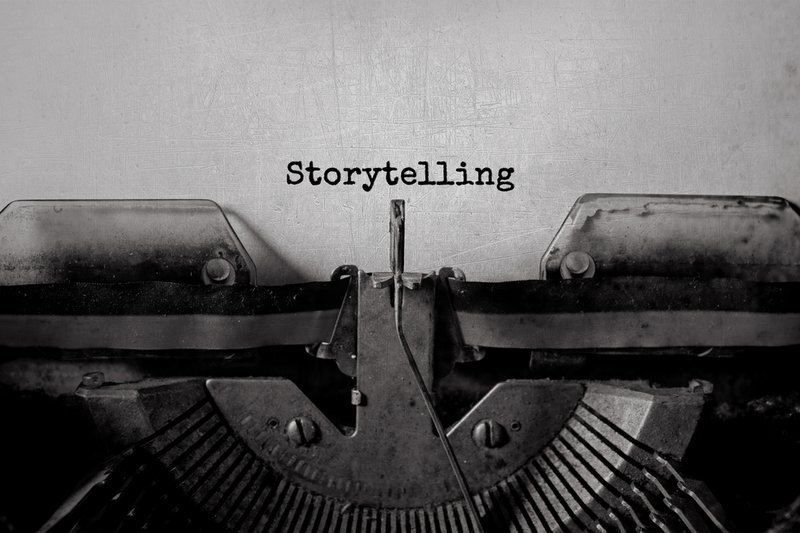Climate Justice and Local Storytelling: Lessons from the Road
Blog Post

Jan. 17, 2024
For the past several months, the Climate, Democracy, Governance, and Storytelling Pilot within New America’s Political Reform program has sought to understand potential connections between local governance, local storytelling, and climate action in communities that face disproportionate climate risks. Ongoing research has established that Black, Latino, indigenous, working-class, and poor neighborhoods shoulder additional burdens from flooding, fires, pollution, and wetland loss, and that disadvantaged neighborhoods tend to lose wealth after disasters, whereas well-off whiter neighborhoods often gain wealth. These same environmentally-marginalized communities also tend to face severe political and economic disinvestment, declining tax bases, and civic participation—and are also on the leading edge of the disappearance of local media.
It has been our working hypothesis that these challenges to local democracy and local storytelling (including journalism, literature, film, poetry, music, and photography) are interconnected, and that these twinned challenges are important pieces of the picture of disproportionate climate impacts and inadequate climate responses in frontline marginalized communities. Deficits there certainly contribute to climate inaction or unequal burdens; climate change can further threaten self-determination and can even destroy cultural heritage. A vicious cycle is in play.
Regarding storytelling, it is also our expectation that finding ways to nurture and support climate storytellers in these places is a crucial part of any climate policy that seeks justice. Climate policy at present is dominated by paradigms and strategies that can reduce carbon emissions and can protect Western, urban population centers from the worst impacts of a warming world; these same policies might also increase relative disparities in wealth, quality of life, and cultural capital. For example, well-designed managed retreat plans are all but necessary in many coastal areas, but they are often controversial in environmental-justice communities, where leaving often means abandoning historically and culturally relevant spaces, and disrupting local lifeways.
By definition, storytelling is the process by which these community lifeways and nuances are documented and understood. Over several months in 2023, we visited environmental-justice communities to get a better measure of the interactions between local storytelling and climate action, and to assess existing modes of support for storytellers.
In Beaufort County, South Carolina, we met with several people involved in the preservation of local Gullah culture and history. These included photographer and filmmaker LeeAnn Chisolm Morrissette, who is working to rematriate her own family land on Wadmalaw Island, and who chronicles the efforts of local farmers—like Bill and Sarah Green on St. Helena Island—to fight Black land loss and wetland degradation by promoting traditional Gullah agricultural techniques. In modern parlance, similar techniques are often referred to as “regenerative agriculture,” and they are often favored for being less carbon intensive than industrial farming. For the Greens, traditional agriculture has additional benefits: preserving an important heritage practice and promoting Gullah identity among local youth who often work on the farm or in the kitchens of their restaurant.
We also visited the Penn Center, one of the first educational institutions for Black people in the South, now a historic cultural and educational center. The Penn Center does not have much programming specifically dedicated to climate change as such, but much of the work that it has done to archive Gullah culture and anchor the local community are necessary scaffolds for climate justice. In particular, the archive stresses the importance of the wetlands and waterways of the South Carolina Sea Islands in sustenance practices and Gullah identity, and would inform any plan to mitigate sea-level rise in the area.
Across the South, from the South Carolina Sea Islands to Jackson, Mississippi, to Louisville, Kentucky, we found similar patterns. Efforts to create just transition plans and community-responsive climate action are already organically tapping into nodes of storytelling and institutions (such as minority-serving universities and churches) that are themselves natural loci of storytelling. Conversely, we find that the adverse effects of climate change—from flood and fire damage to death and disability of elders to out-migration—place local stories at risk.
Thus, we find that local storytelling carries a double importance in climate justice. Historical documents and artifacts, cultural narratives, and artistic expressions are valuable unto themselves, and they are most at risk in America in Black, Latino, Indigenous, and low-income communities. It is a moral imperative to shape climate policy to protect and advance these forms.
Moreover, local storytelling also carries with it much promise as part of the broader imaginative force of shaping a post-carbon world. People who have historically been placed “in harm’s way” in our built environment already have by necessity developed methods of mitigating local risks and of building communities that can absorb climate shocks. Policymakers who have often ignored these places and people would do well to pay attention.
For our part, we believe that providing direct financial support, training, and networking for journalists, filmmakers, photographers, and artists in marginalized frontline communities, with a focus on creative autonomy and responsiveness, is a first step for meeting both of these objectives. Given the work that so many local storytellers have already done on minimal budgets with little support or recognition, we think this model will have benefits that are orders of magnitude greater than the inputs.